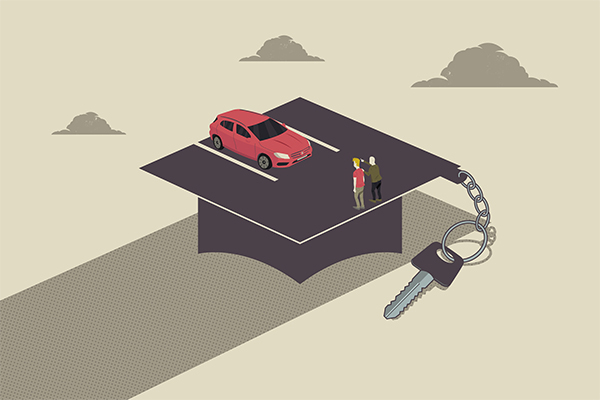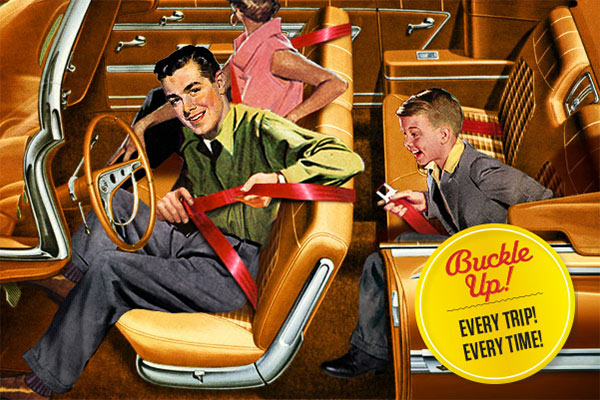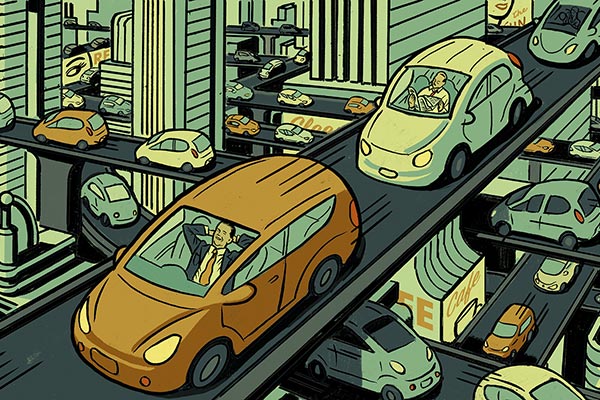The holiday season is a wonderful time to hit the road for a visit with family and friends. But it often means long drives in heavy traffic. To help you stay safe (and sane) on the road to your destination, here’s a list of defensive driving tips to prepare you for the drive.
Planning: The First Line of Defense
According to the National Safety Council (NSC), defensive driving means taking reasonable action to prevent a collision. But defensive driving starts before you even get on the road. Checking weather and road conditions in advance helps you plan a route and know what to expect along the way. It’s also important to pack the car with basic supplies. A first aid kit, flares, snacks and blankets ensure you’re ready for emergencies on long drives.
Traffic Watch
The holiday season is not only one of the busiest travel times, but this year’s low gas prices mean many people will probably choose to drive. And more cars on the road means a higher chance of fatal crashes, so it’s extra important to stay alert this year and learn to spot and avoid hazards using these NSC-approved tips.
– Defensive driving instructors recommend checking your mirrors every three to five seconds and continuously scanning ahead for possible dangers.
– Always give the right of way to fellow motorists, but be prepared to react to unexpected lane changes and turns.
– During heavy traffic, keep a safe distance from other vehicles and give yourself ample response time by slowing your speed.
– Look for signs of impaired, distracted and even aggressive driving and develop techniques like deep breathing to keep calm under pressure.
Collision-Proof Your Drive
 The NSC has identified six unsafe driving behaviors that most often lead to collisions. By understanding each infraction and learning how to avoid them, holiday travelers can develop safer driving habits and collision avoidance techniques.
The NSC has identified six unsafe driving behaviors that most often lead to collisions. By understanding each infraction and learning how to avoid them, holiday travelers can develop safer driving habits and collision avoidance techniques.
1) Improper speed. Keep a close eye on both the posted speed limit and weather conditions. Even if you’re obeying the limit, you may need to slow down to drive safely on a wet or icy road.
2) Violating right of way. To make sure you’re yielding properly and following all traffic signals and stop signs, drive at an appropriate speed to give yourself time to react and take a moment to scan intersections before entering them.
3) Driving left of center. Patience and foresight are key to avoiding this unsafe behavior. Slow down and stay behind cyclists or pedestrians until it’s safe to pass them, and watch the road ahead for animals or other obstacles so you can brake or safely steer around them instead of swerving into the other lane.
4) Turning improperly. Always use turn signals to let other drivers, pedestrians and cyclists know where you’re going. (Most traffic laws require you to signal within 100 feet of a turn, but you should check local regulations.)
5) Passing improperly. When passing, be sure to use your turn signals and check your blind spots, as well as in front of and behind your vehicle. You should be able to pass without getting too close to the car ahead or going over the speed limit; if you can’t, it may not be safe to pass.
6) Following too closely. At low speeds, this can lead to irritating fender benders; at high speeds, it can be deadly. Give yourself at least three seconds of distance between your own vehicle and the one ahead. If someone is tailgating you, don’t speed up! Maintain your speed and move over to let him or her pass if and when it is safe to do so.
Did you know? GEICO policyholders who complete defensive driver training could qualify for discounts on their auto insurance, depending on the state they live in. To learn more about defensive driver courses in your state, visit geico.com/ddc.
By Katherine Palbom & Kristen Koch










Edward jay Lopez says,
Arrive Alive
Kyaw z latt says,
That’s great to remind us to drive
Thanks geico
Ziomara. Diaz says,
Thank you for this information. Good drive . Happy Holiday. All costumer GEICO.
Mary Jacobs says,
Very helpful information thanks for all your concerns. I will keep this in my do’s and don’t list when traveling. Happy holidays!
James Null says,
All suggestions are very good. After driving professionally for many years these defensive driving rules are second nature to me, but very few drivers observe them. I need a course that covers frustration on the road. Help. James Null
Jorge Jimenez says,
those educational tips help to refresh our awareness during heavy traffic thanks for send me that .
Paula Shirley says,
Thank you.
Esther A Piedra says,
You forgot to mention hazards like: texting, dialing a cell phone, map reading, fiddling with the radio or tape/CD player, eating, or looking at passengers with whom you are talking, and of course … drugs and alcohol!
Netc Johnson says,
Very helpful information. Thank you!
Travis Carlile says,
Thanks for the reminders. Merry Christmas
Callie Turner says,
Great article. not only as a reminder to be but I will pass a copy on to my teenage grand daughter as well as her parents
Merry Christmas and a very Happy New Year
Jesus Martinez says,
Thank you for remain us to drive safely during the holiday season, the information you provided is very helpful including in every day driving.
Mercedes says,
Thankssss!!????
Dan Garcia says,
Thanks for the notification and staying close to your customers. We appreciate it, happy holidays!
Barry Richmond says,
My close calls have been making a right turn on a red light (CA). Constantly looking left for an opening and not checking back to the right before you make your right turn. Pedestrians can come in close on your right side and you hit the gas before looking right can be really scary. Look both ways, listen and be patient. If you drive the speed limit you don’t have to check your review mirror all the time.
Barry Richmond